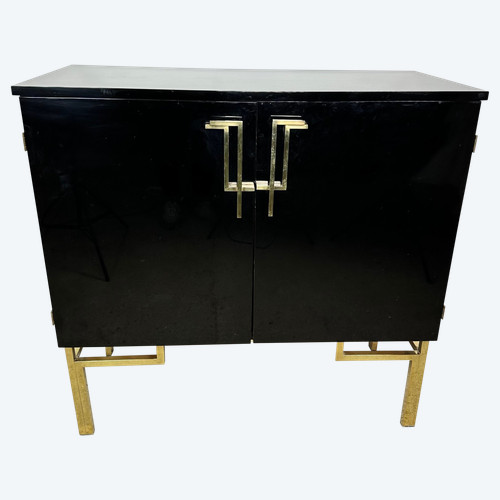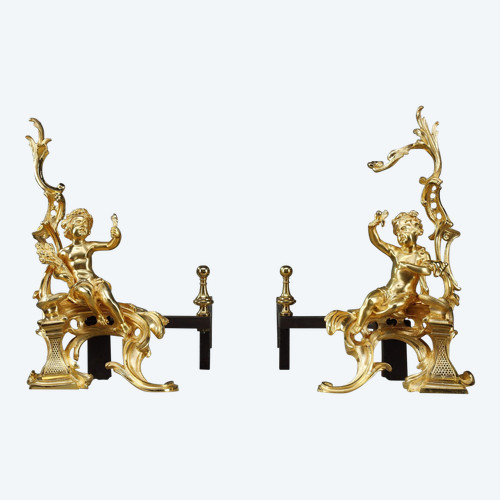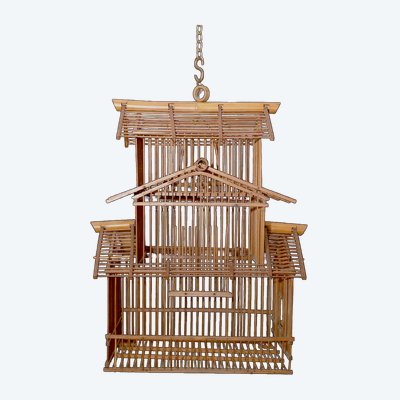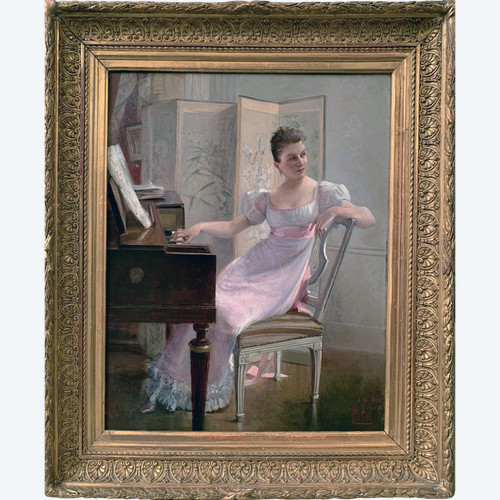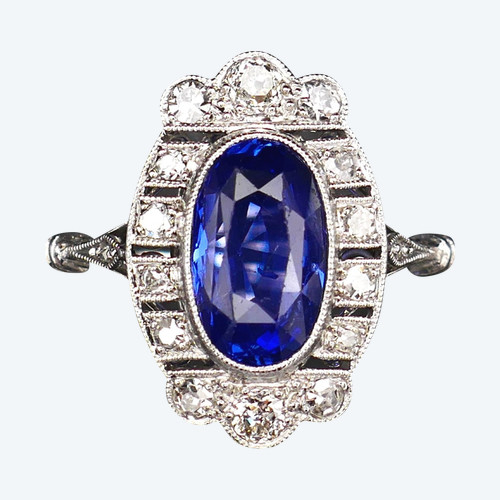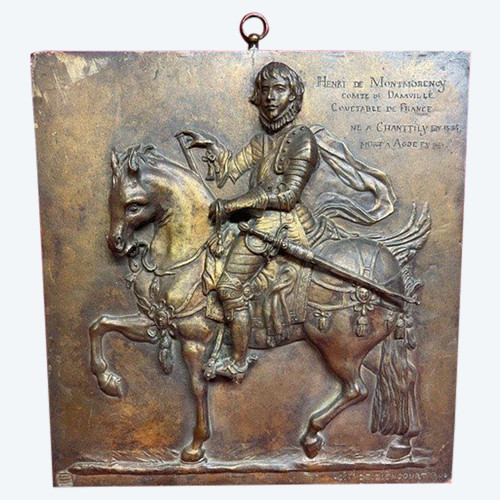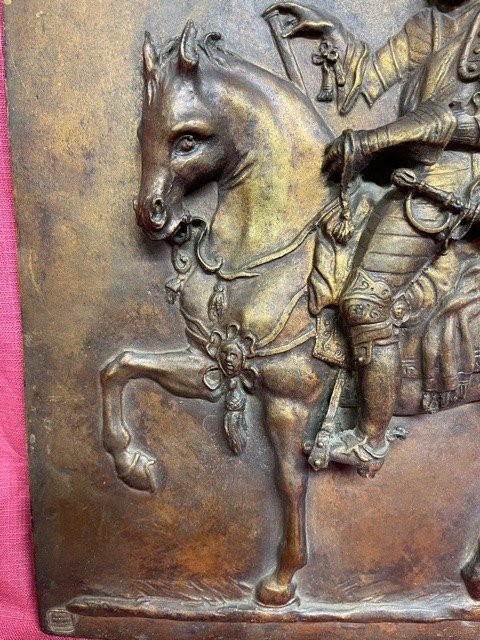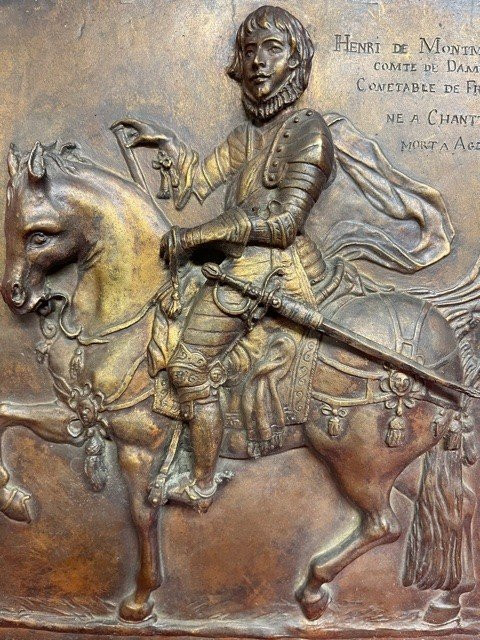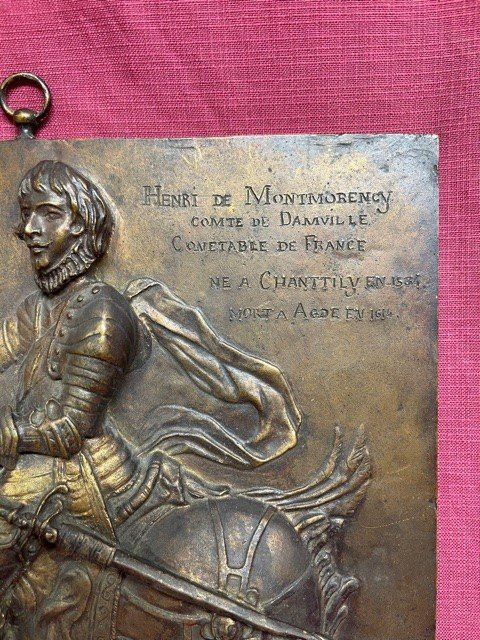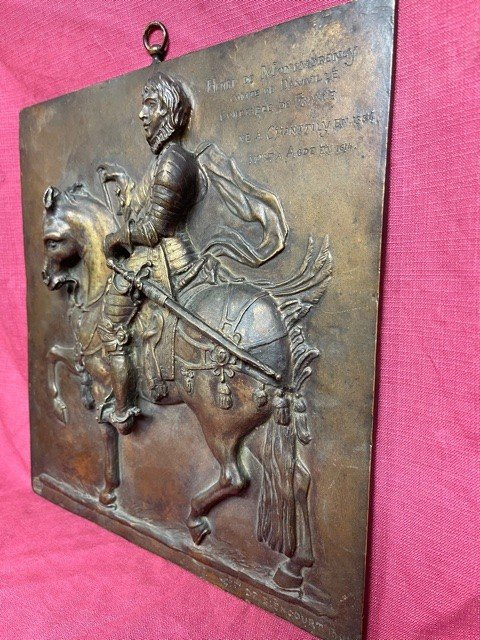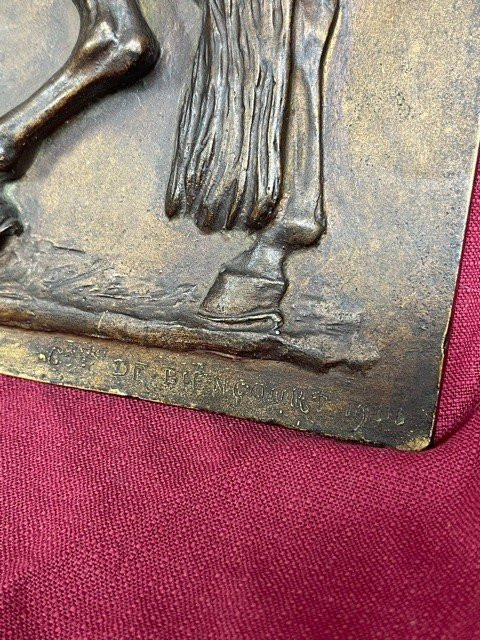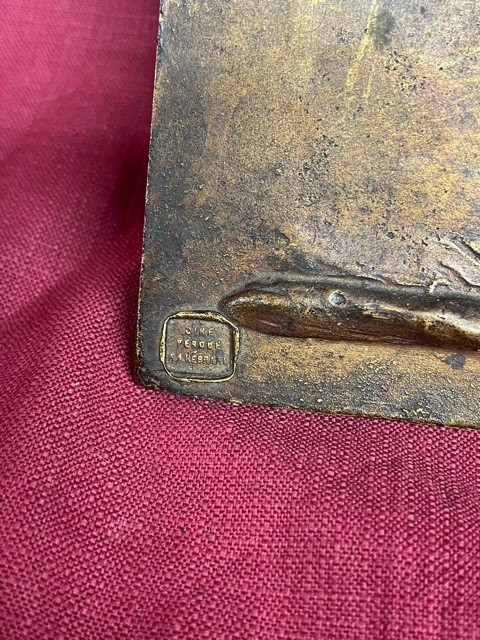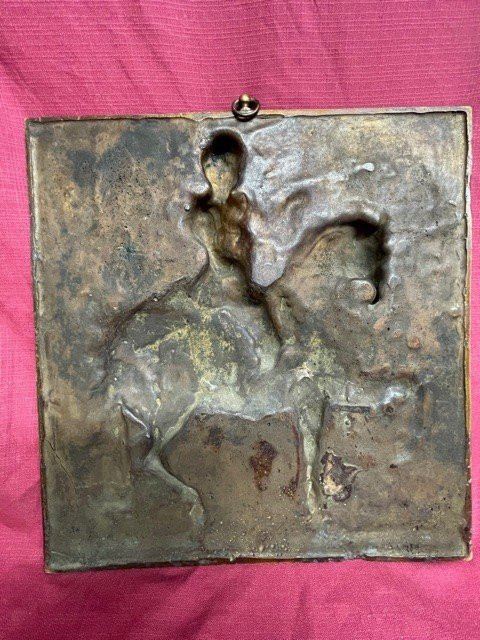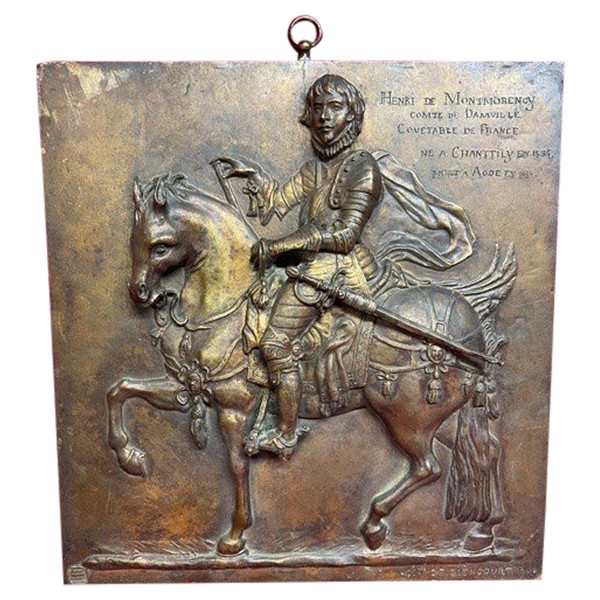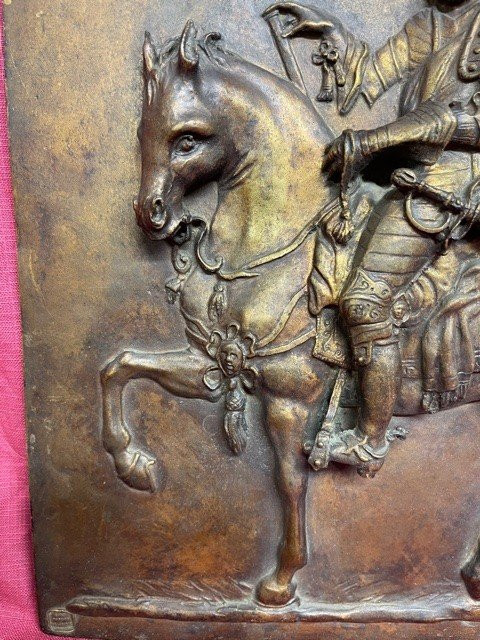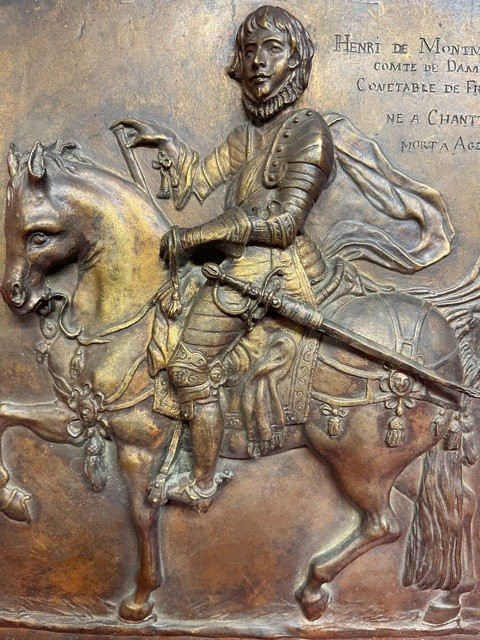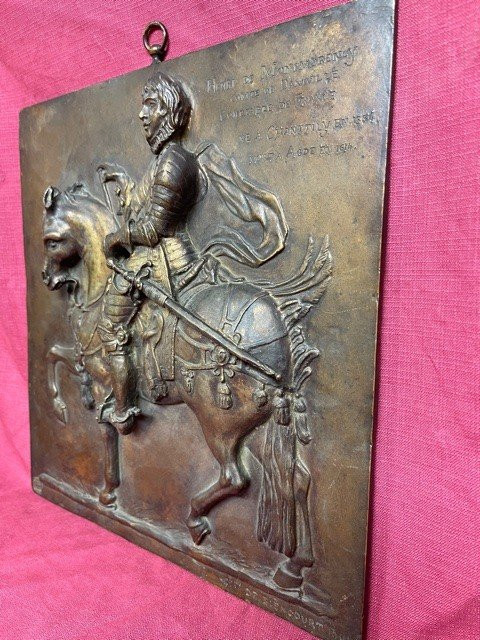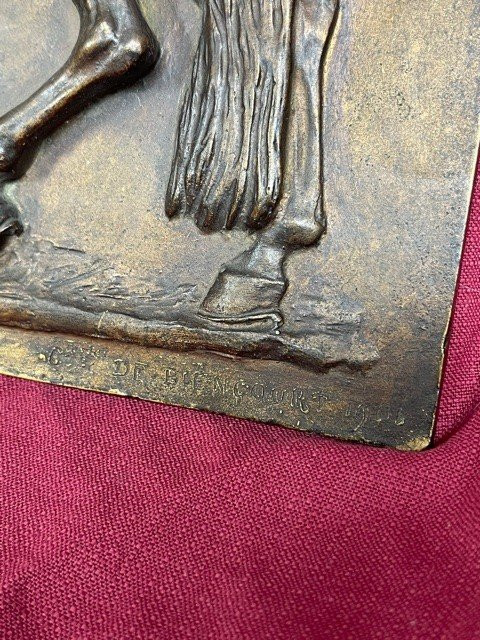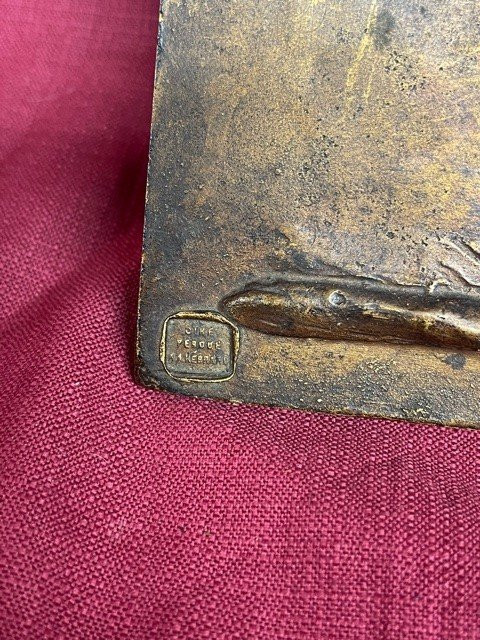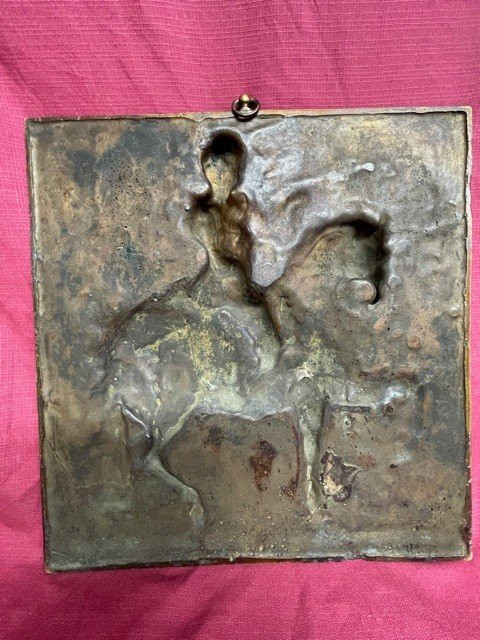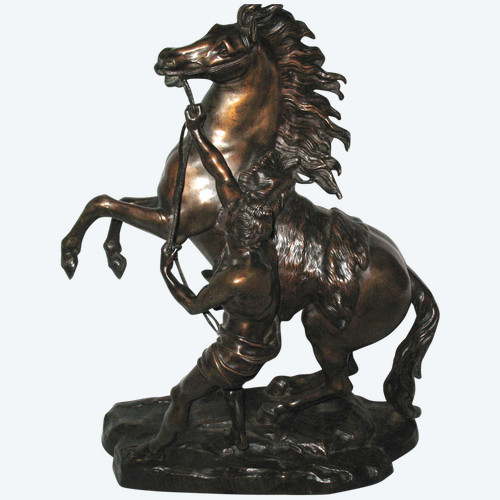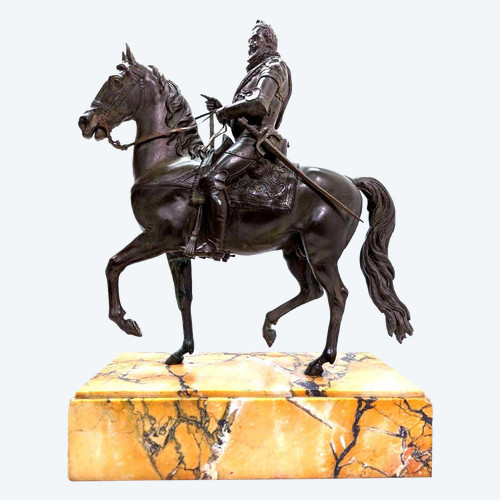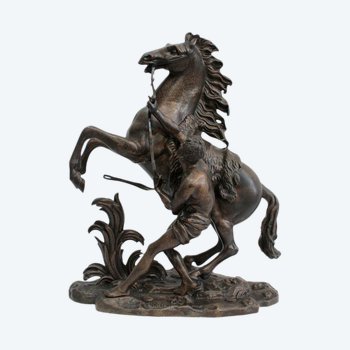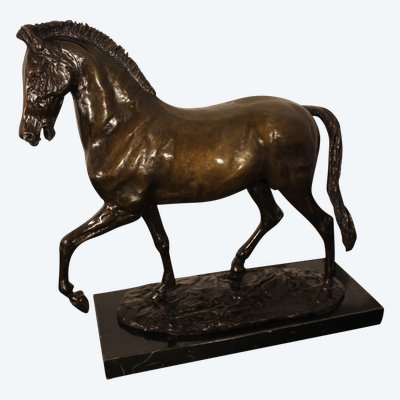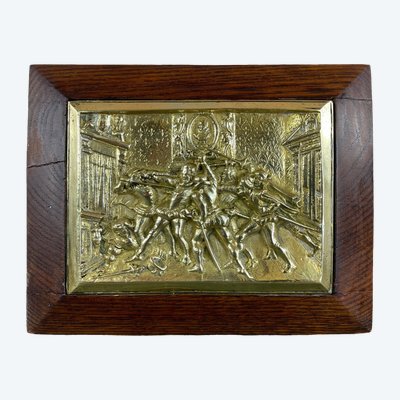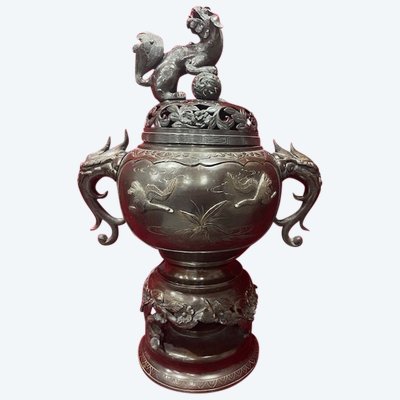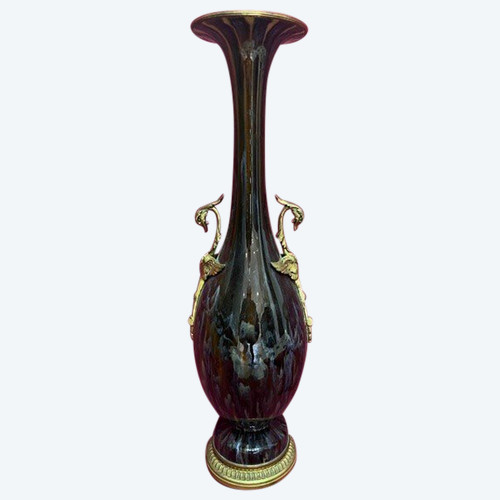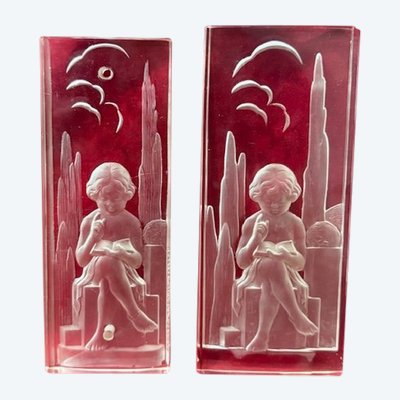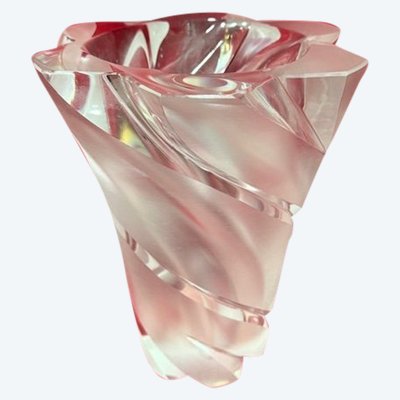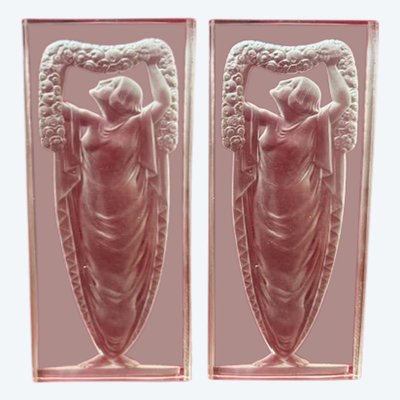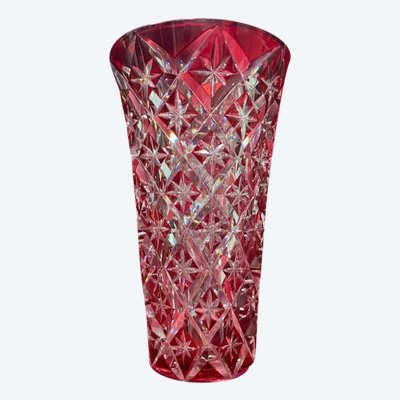This description has been translated and may not be completely accurate. Click here to see the original
Countess Valentine de BIENCOURT (1839-1929)
Henri de Montmorency on horseback in ceremonial dress, 1911
Cast and chiseled bronze plaque in high relief engraved at the top right "HENRI DE MONTMORENCY COMTE DE DAMVILLE CONETABLE DE FRANCE NE A CHANTILLY EN 1534 MORT A AG.DE 1614".
Signed lower right Ctesse DE. VERY SHORT and dated 1911.
Lost wax casting with foundry stamp "CIRE PERDUE A.A Hébrard"
High. 29.7 Width. 28.5cm.
The Comtesse de Biencourt was born Chaponay in Paris on August 11, 1839. She lost her mother, Marquise de Chaponay (1819-1841) when she was only two years old, her father, the Marquis César de Chaponay (1804-1882) , then entrusts his education to a teacher of Italian origin. The latter noticed that the young Marquise had a taste for drawing and modeling very early on, pushing her to copy from life the animals on the farm near the Château de Beaulieu. This is how a lying ox is executed by the child who is then only a dozen years old. The perfecting of his training is done by an artist from Lyon, Mr. Jean-Baptiste-Louis Guy (1824-1888) then professor of modeling at the Municipal School of Drawing of the Petit-Collège. As a young woman, her days were punctuated by horseback riding and meetings with her friends, which she organized with her husband, Léon de Biencourt (1833-1871). She then sculpts during her long discussions, so her workshop is visited by many notables such as the Count and Countess of Lude, the Countess of Broissia or the Baroness of Saint-Joseph.
But war broke out in 1870 and her husband, after numerous battlefield distinctions which earned him the Cross of the Legion of Honor, died in May 1871. The Countess then devoted herself entirely to her three daughters, whose eldest has just turned thirteen. She bought the property of Prince Léon Radziwill in the Champs-Elysées district; it is to furnish it that she carries out her most important works. She first builds wooden models and then covers them with clay. A plaster cast is then cast on this sculpture, always in the presence of the Countess. It is she finally who chisels the plaster. It is by these processes that she molds candlesticks, inkwells and parts of furniture, vases or even fireplaces. The plaster is then entrusted to MM. Durand, engravers and cabinetmakers, to execute the final sculptures in bronze, wood or marble. At the start of its production, a few pieces were entrusted to Dasson, such as a cartel and a pair of candelabras, and were put on the market. This release on the market is very rare in the production of the Comtesse; it only occurs on two other occasions. The first at the request of M. de Bonnechose, six examples of an umbrella stand "Caduceus of Mercury" were created, the owners of which were M. de Bonnechose, the Duchess of Levis-Mirepoix, née Chaponay, the museum of Lyon and the three daughters of the Countess. The second occasion concerns, at the request of the Duke of Doudeauville then French Ambassador in London, silver menu holders to be used for dinners at the Embassy. Otherwise all other works are unique and the molds are destroyed.
Then, with her age, the Comtesse de Biencourt had difficulty using clay and turned to marquetry. She thus composes drawings that she reproduces on plates of wood, tortoiseshell, pewter or even copper in order to saw them finely. She makes boxes, mirrors and also furniture. In particular, she succeeds in using the "Boule" technique of the 17th and 18th centuries. Around 1892, she began to travel with some of her daughters in North and Central America, then in the Middle East and the Maghreb and finally in southern Europe. In Italy, the Countess began making lost-wax reproductions of a few masterpieces from the 16th and 17th centuries, such as Saint George by Carpaccio at the Church of the Slavons in Venice. Sometimes she works just from a photograph or a postcard, the rest of the sculpture is filled by her memory.
In 1904 on the occasion of the exhibition devoted to the French primitives at the National Library of France with the historical figures of the Bourbons, the Countess resumed her work of imitation because she reproduced the effigies of the dauphin Charles Orland (1492-1495), son of Anne of Brittany and Charles VIII, and the young princess of Suzanne de Bourbon (1491-1503), daughter of Duke Pierre de Bourbon and Anne de Beaujeu. The first bust is kept at the Museum of Decorative Arts in Lyon where the living room reconstituted under his name is similar to its interior, while the second is at the Château de Blanville (Eure-et-Loir), they are both reproduced by the Hébrard founder.
Biencourt-Cossé, The work of the Comtesse de Biencourt, née Chaponay (1839-1929), Paris, November 1932.
For all information
Ref: 4PWTW09G8Q

